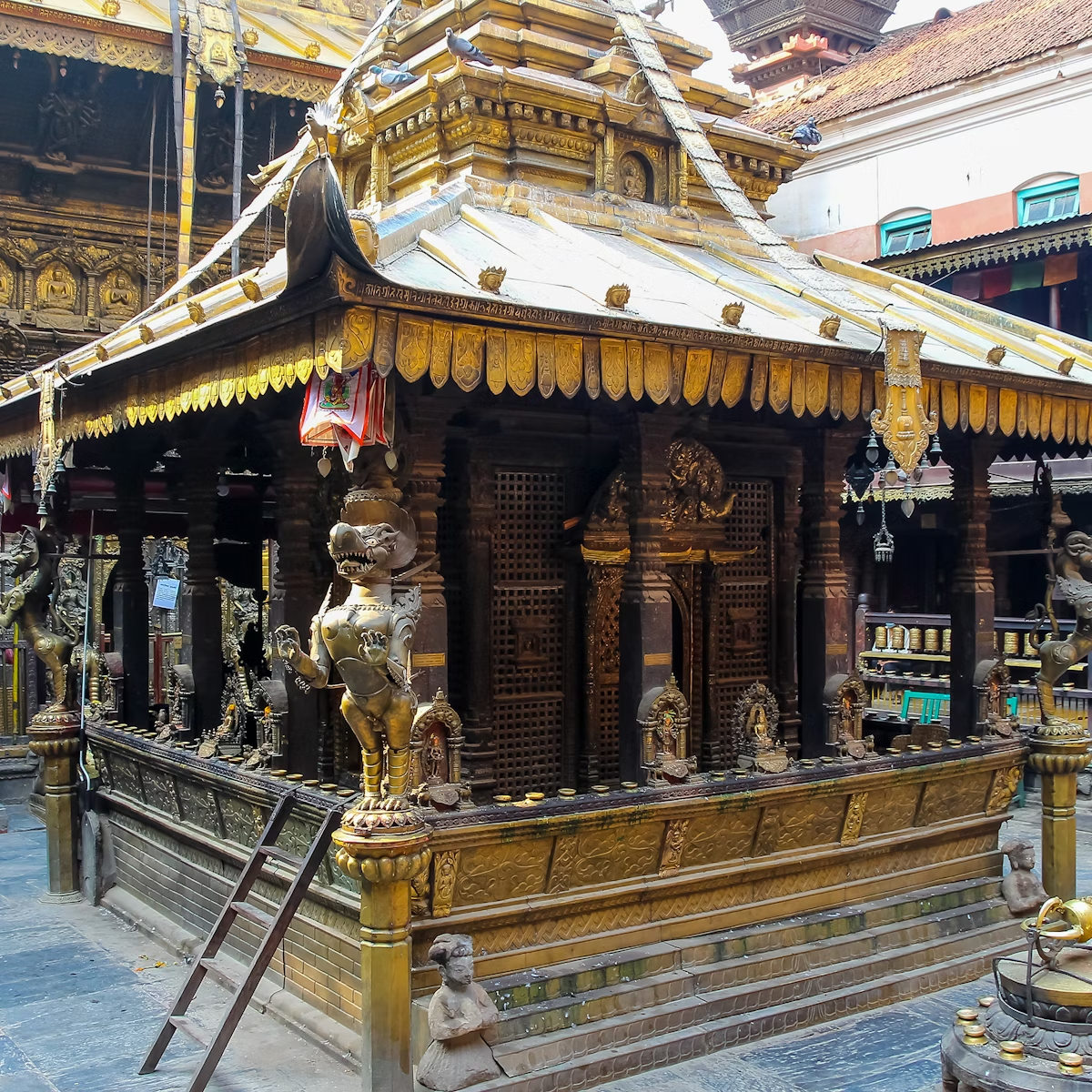Panauti’s most famous temple is set in a vast courtyard full of statuary on the isthmus between the Roshi and Pungamati rivers; some earthquake damage is still visible. Topped by a three-storey pagoda roof, the temple is a magnificent piece of Newari architecture, and one of the tallest pagoda-style temples in Nepal. The first temple here was founded over a lingam in 1294, but the shrine was rebuilt in its present form in the 15th century.
The lingam is said to have been created personally by Shiva. The woodcarvings on the temple’s windows, doorways and roof struts are particularly fine, and the erotic carvings here are subtle and romantic rather than pornographic. The upper section of the temple is hung with pots and pans – offerings from young married couples hoping for a prosperous family life.
To the south of the main temple is the rectangular Unamanta Bhairab Temple, with three faces peering out of the upstairs windows. Located within is a statue of Bhairab, accompanied by goddesses. A small, double-roofed Shiva temple stands in one corner of the courtyard, and a second shrine containing a huge black image of Vishnu as Narayan faces the temple from the west.
Inside the temple compound is also the well-done Panauti Museum, an interesting collection of artefacts from the region – brassware, woodcarvings, statuary – including original sections from the Indreshwar Mahadev Temple.







